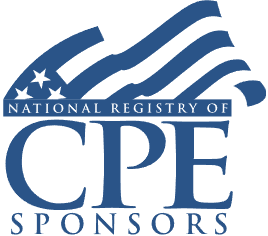Blocker Structuring Under Current U.S. Tax Law: Key Considerations for U.S. Venture Funds and Their Investors

Course Details
- smart_display Format
On-Demand
- signal_cellular_alt Difficulty Level
Intermediate
- work Practice Area
Tax Law
- event Date
Thursday, June 17, 2021
- schedule Time
1:00 p.m. ET./10:00 a.m. PT
- timer Program Length
90 minutes
-
This 90-minute webinar is eligible in most states for 1.5 CLE credits.
-
BARBRI is a NASBA CPE sponsor and this 110-minute webinar is accredited for 2.0 CPE credits.
This CLE/CPE course will provide tax counsel and private investment professionals with a practical guide to structuring investments by private equity and venture capital funds (PEVC funds) in a manner that seeks to address the various tax sensitivities of PEVC fund investors.
Faculty

Mr. Clegg's practice encompasses all areas of general corporate and partnership income taxation as well as the taxation of mergers and acquisitions (both domestic and cross-border). He is broadly experienced with partnership taxation and has worked on numerous matters involving structuring tax efficient commercial and transactional structures for our corporate clients. Additionally, Mr. Clegg's practice focuses on the formation and general representation of venture capital and private equity funds and related entities.

Mr. Huber supports venture capital and growth equity fund managers on all aspects of the fund lifecycle. He has significant experience advising fund managers on issues related to fundraising, GP management, and economics, including the tax and structuring aspects of fund formations and investments globally. He helps clients navigate complex matters in the evolving legal and regulatory landscape, such as the impact of recent tax reform on investment and organizational decision-making. He also has significant experience advising fund managers and investors in connection with secondary purchases and sales of fund interests.

Ms. Xu's practice encompasses all areas of general corporate and partnership income taxation as well as the taxation of mergers and acquisitions (both domestic and cross-border). She is broadly experienced with partnership taxation and has worked on numerous matters involving structuring tax efficient commercial and transactional structures for fund and corporate clients. Additionally, Ms. Xu's practice focuses on the formation and general representation of venture capital and private equity funds and related entities.
Description
Investors in PEVC funds have various, sometimes competing, tax concerns when it comes to how their capital is invested. Common examples include U.S. tax-exempt investors who may be sensitive to the receipt of unrelated business taxable income (UBTI) and non-U.S. investors who may be sensitive to the receipt of income treated as effectively connected to a U.S. trade or business (ECI). While navigating the concerns of a diverse investor base is not a new task for PEVC funds, tax reform has added more wrinkles to the analysis.
This webinar will outline the benefits and potential risks to: (1) U.S. tax-exempt investors investing in "blocker" corporations to block UBTI and (2) non-U.S. investors investing in blocker corporations to block ECI. The panel will also consider the impact of blocker structures on U.S. PEVC fund investors not sensitive to UBTI or ECI. The webinar will also address the implications that tax reform has had on traditional structures and expectations.
Listen as our panel discusses key considerations for structuring investments in PEVC funds to address the various tax sensitivities of fund investors.
Outline
- UBTI and UBIT impact of private equity, hedge fund, and offshore funds
- Blocker corporations
- Foreign vs. domestic structuring considerations
- Assets to hold in blocker corporations and capitalization issues
- Required filings
- Tax and operational risks
Benefits
The panel will review these and other noteworthy issues:
- U.S. PEVC fund activities that generate UBTI
- U.S. PEVC fund activities that generate ECI
- Consequences to investors of UBTI/ECI
- Blocker structures utilized by PEVC funds to mitigate the impact of UBTI/ECI
- How PEVC fund focus and strategy impacts optimal blocker structure
- Negotiation strategies for PEVC funds and their investors to ensure specific sensitivities are not overlooked
NASBA Details
Learning Objectives
After completing this course, you will be able to:
- Determine asset holdings that could be placed in a blocker corporation to avoid UBTI and UBIT
- Identify key structuring components of a UBTI blocker corporation
- Recognize possible IRS audit and exemption risks in operating a blocker to hold UBTI-generating assets
- Differentiate tax and operational issues between domestic and foreign blocker corporations holding UBTI-generating investments
- Field of Study: Taxes
- Level of Knowledge: Intermediate
- Advance Preparation: None
- Teaching Method: Seminar/Lecture
- Delivery Method: Group-Internet (via computer)
- Attendance Monitoring Method: Attendance is monitored electronically via a participant's PIN and through a series of attendance verification prompts displayed throughout the program
- Prerequisite: Three years+ business or public firm experience at mid-level within the organization, preparing complex tax forms and schedules and structuring corporate entities; supervisory authority over other preparers/accountants. Specific knowledge and understanding of UBTI and UBIT rules; familiarity with asset transfers and nonprofit organization operations

Strafford Publications, Inc. is registered with the National Association of State Boards of Accountancy (NASBA) as a sponsor of continuing professional education on the National Registry of CPE Sponsors. State boards of Accountancy have final authority on the acceptance of individual courses for CPE Credits. Complaints regarding registered sponsons may be submitted to NASBA through its website: www.nasbaregistry.org.
Related Courses

Equity Compensation Grants in Partnerships and LLCs: Overcoming Tax Challenges and Key Planning Techniques
Tuesday, April 22, 2025
1:00 p.m. ET./10:00 a.m. PT
Recommended Resources
How CPE Can Bridge the Gap Between What You Know and What You Need to Know
- Career Advancement
Gain a Competitive Edge Through Efficient CPE Strategies
- Learning & Development
- Business & Professional Skills
- Career Advancement